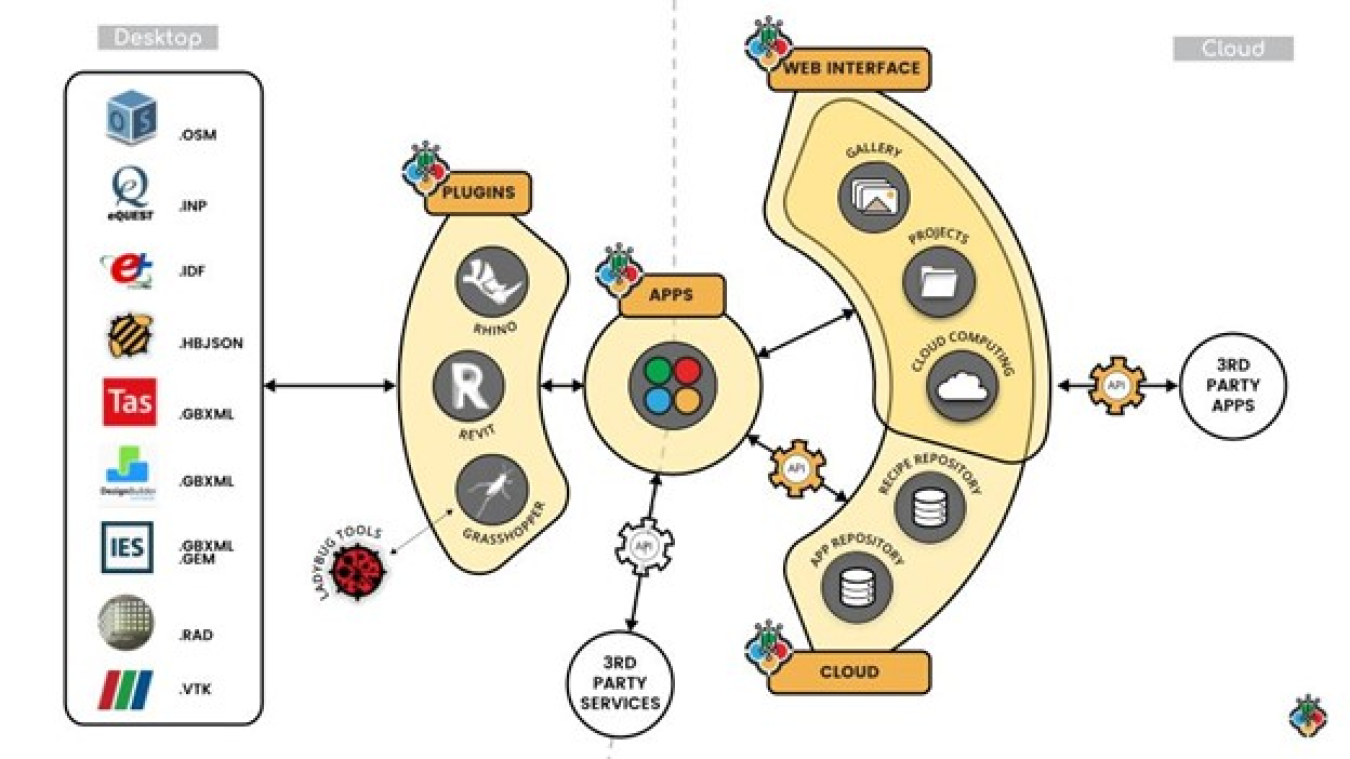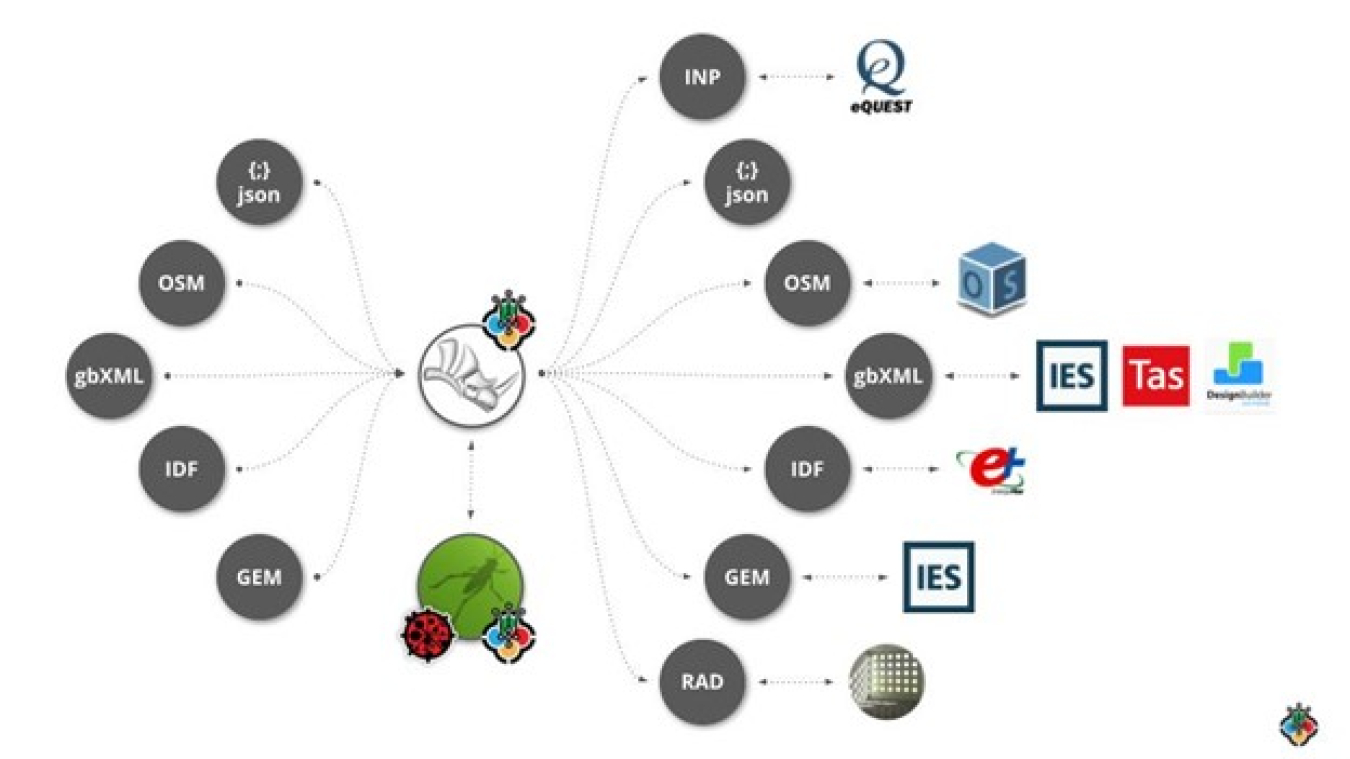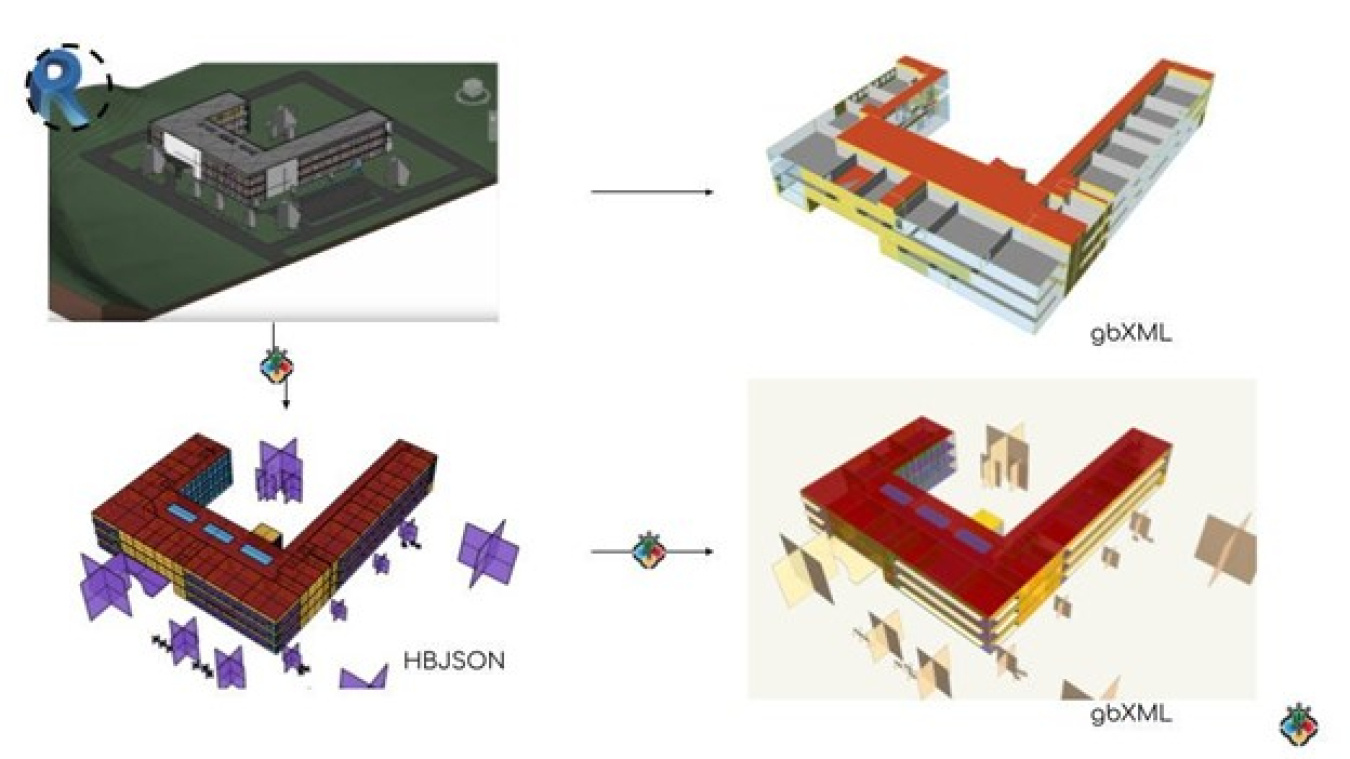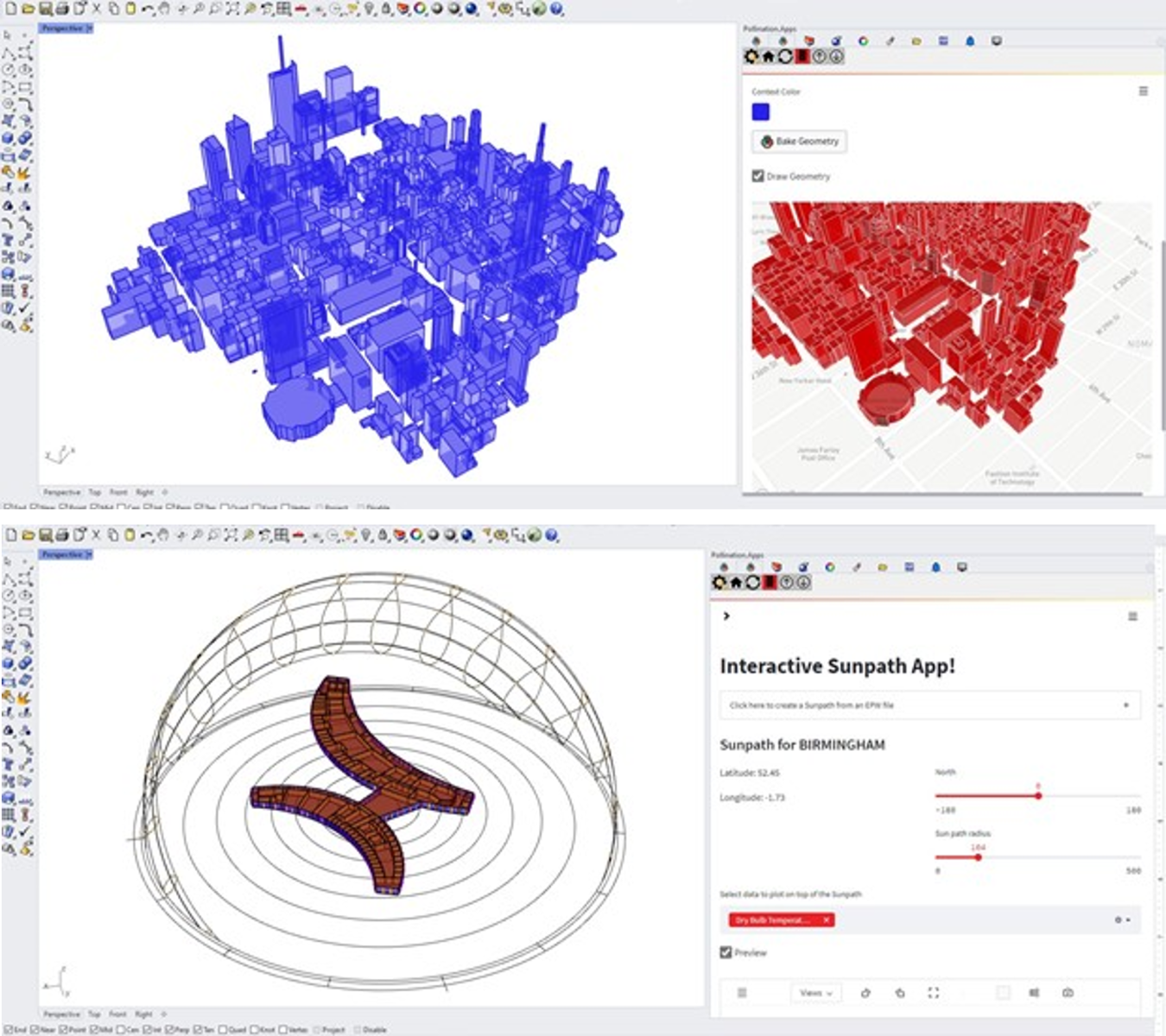Long known for daylighting, energy, and comfort analysis plugins for Grasshopper/Rhino3D, Ladybug Tools introduces a new tool-agnostic simulation ecosystem that acts as a collaborative workspace for experts, beginners, and application providers.
March 17, 2022BEM software developer Ladybug Tools LLC is well known for its suite of open-source insect-named analysis plugins for Rhino/Grasshopper; the eponymous Ladybug, Honeybee, Butterfly, and Dragonfly. Now, with support from a DOE Small Business Innovation Research (SBIR) award, Ladybug has launched Pollination, a new paradigm for integrating building performance simulation into design.

Pollination is not a centralized “one-stop-shop” simulation tool, it is an ecosystem that connects simulation and performance analysis services to design applications. And in doing so connects the different principals in a design project—the architect, the mechanical engineer, the energy modeler—to one another, allowing for faster and more productive collaboration. “To make a meaningful impact on collaboration in the building industry, we need products that are loved by experts and beginners alike,” says Ladybug Tools co-founder Mostapha Sadeghipour Roudsari. “We have done this successfully with Ladybug Tools plugins for the Rhino and Grasshopper community. Pollination will do the same on a more accessible platform and on a much larger scale.”
At base, Pollination is a web-based collaboration hub that houses analysis models. It includes a set of utilities for previewing geometry, editing models, running different kinds of analyses—lighting simulations using Radiance, energy simulations using OpenStudio and EnergyPlus, multi-building simulations using URBANopt, and (coming soon) CFD studies using OpenFOAM—and viewing and navigating results. Pollination allows users to run these simulations on the cloud but is not a “cloud-only” service. Users can save money by running simulations on their local machines, invoking cloud resources only when the scale of a project requires it. So far, so usual. A web-based application backed by cloud-computing resources is a common software configuration, increasingly even among BEM applications. However, Pollination has a few key features that make it distinctive.
True to the company’s roots, Ladybug Tools makes heavy use of plug-ins for design applications like Revit and Rhino3D that allow designers to use Pollination’s capabilities—including results viewing and navigation—from within their chosen workflow.

Supporting multiple design applications and multiple analysis engines requires a significant level of interoperability, which Pollination supports using a new schema called HBJSON (short for Honeybee JSON). Ladybug Tools designed HBJSON to help fix the broken BIM-to-BEM pipeline, a notorious pain point for building performance analysis. Automatically translating detailed BIM design models to simplified BEM analytical models has proven difficult to do in a robust way. Project teams spend countless hours rebuilding analytical models manually, which is highly inefficient—especially when project geometry is still fluid—and often doesn’t provide actionable data in the time required. HBJSON has a simple robust geometry model that natively supports multiple analyses including energy and daylighting. HBJSON abstracts the idiosyncratic requirements of analytical engines, makes it easy to identify and correct geometry issues, and has validation capabilities that ensure that design models are geometrically analyzable when exported. HBJSON also cleanly separates geometry from “metadata”—e.g., constructions, space load definitions, and HVAC systems—which makes it easy to sync and merge changes to the analytical model as designers update geometry.

Making significant progress on interoperability is valuable on its own, but Pollination’s third and most impressive trick is customizable automation. “OpenStudio derives a significant portion of its value from Measures which allow users to automate model transformation and reporting,” says Ladybug Tools co-founder Chris Mackey. “We wanted the same kind of automation, mass customization and extensibility for the performance analysis process as a whole.” Pollination provides customizable automation in two “layers”. “Pollination Recipes” encapsulate the steps and details required to perform different analyses—which engine to invoke with what parameters, and how to extract results. Recipes are a generalization of OpenStudio Workflow files. “Pollination Apps” connect Recipes to models, plug-ins, visualization widgets, and outside data sources to create packaged analyses that can be directly invoked from either the Pollination web application or any of its design tool plug-ins. Recipes require domain expertise to write, but Apps can be developed in a day or two even by beginners. Ladybug Tools has developed and published about twenty Recipes for different energy, daylighting, and comfort analyses. Sample Apps include Weather Data Analysis, a Simple Shape Geometry Generator, and a Context Generator—the latter uses OpenStreetMap to import the geometry of surrounding buildings. Apps for load modeling, massing/facade generation, and code-compliance are on the drawing boards. says Roudsari. “Recipes and Apps make Pollination customizable and extensible,” says Roudsari. “This allows us to keep up with users’ needs by empowering users to keep up with their own needs! Users can build solutions on top of Pollination without having to reinvent wheels.”

After two years of development and a six month public beta, Pollination will be officially released in several weeks. “The Wells Fargo Innovation Incubator and US Department of Energy SBIR grants made it possible for us to develop Pollination in a two-year time frame,” says Mackey. “We also owe an enormous thanks to the developers of EnergyPlus, OpenStudio, OpenStudio-Standards, URBANoptTM, and Radiance. Our code is just the icing on a massive software layer cake that they have been building for decades.”

